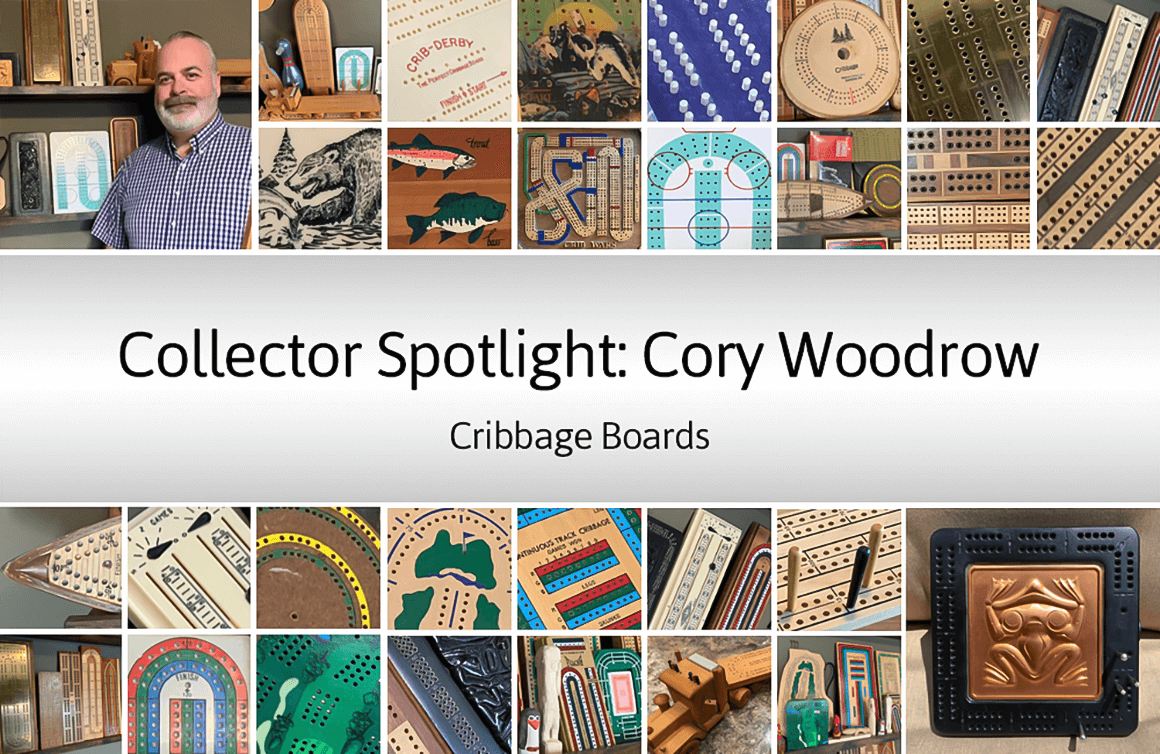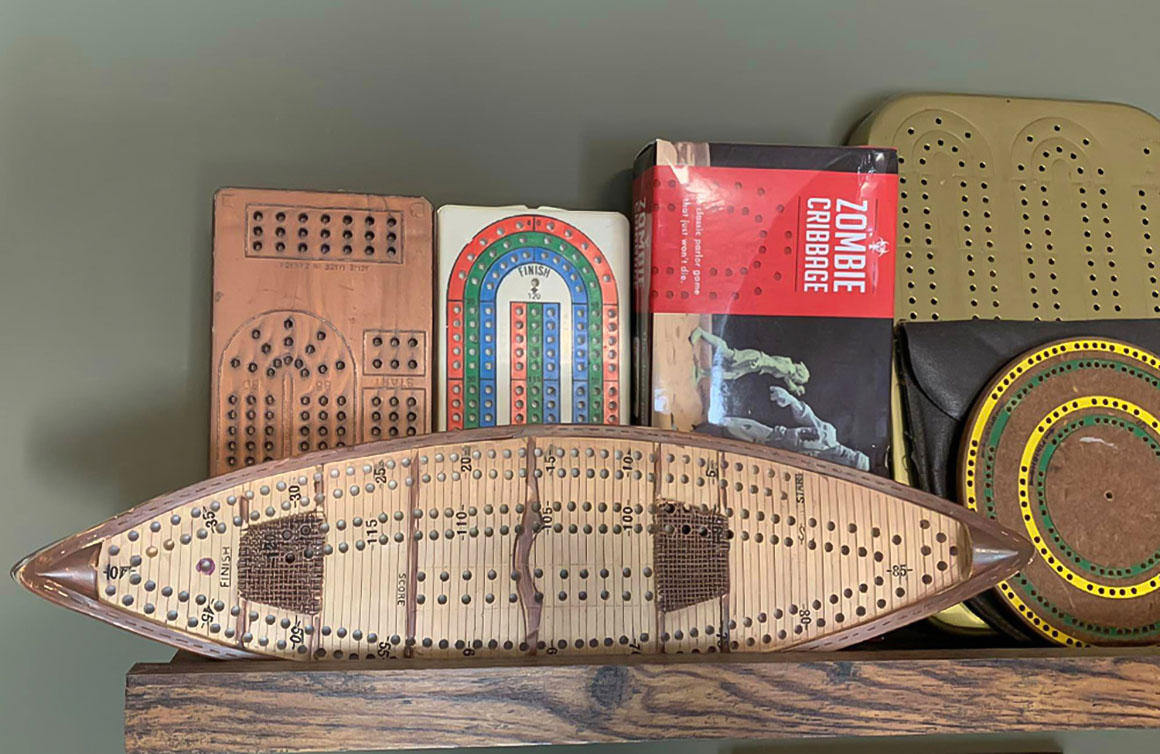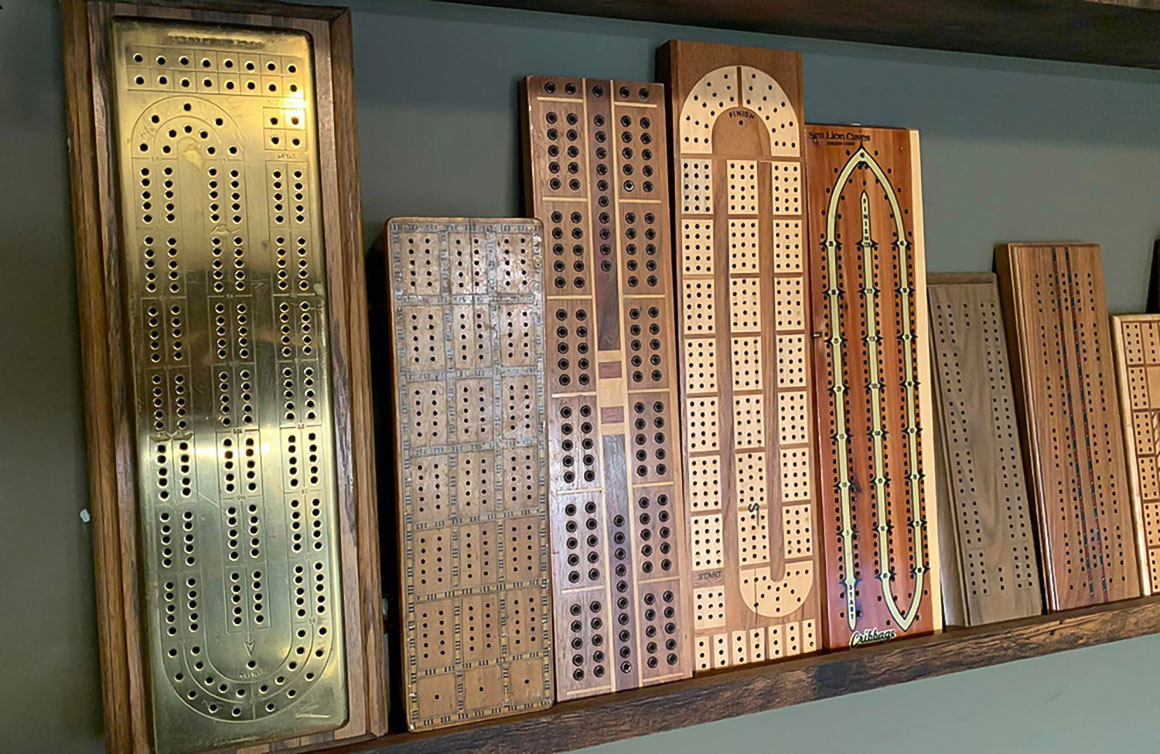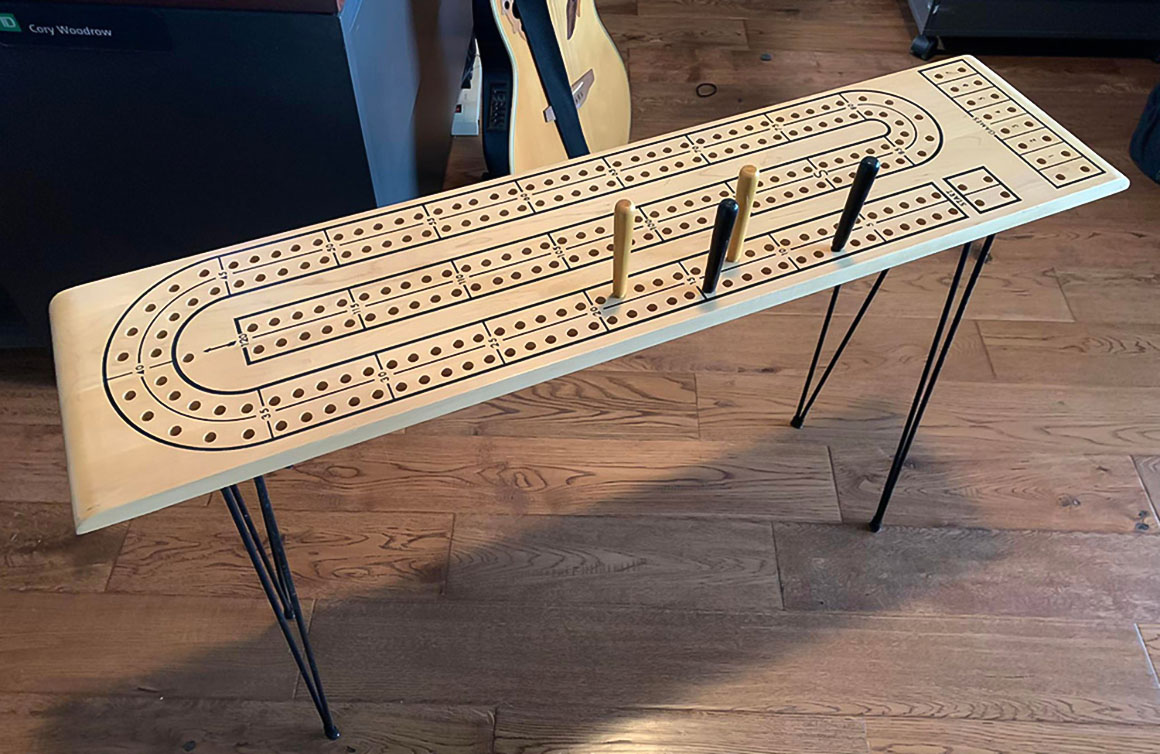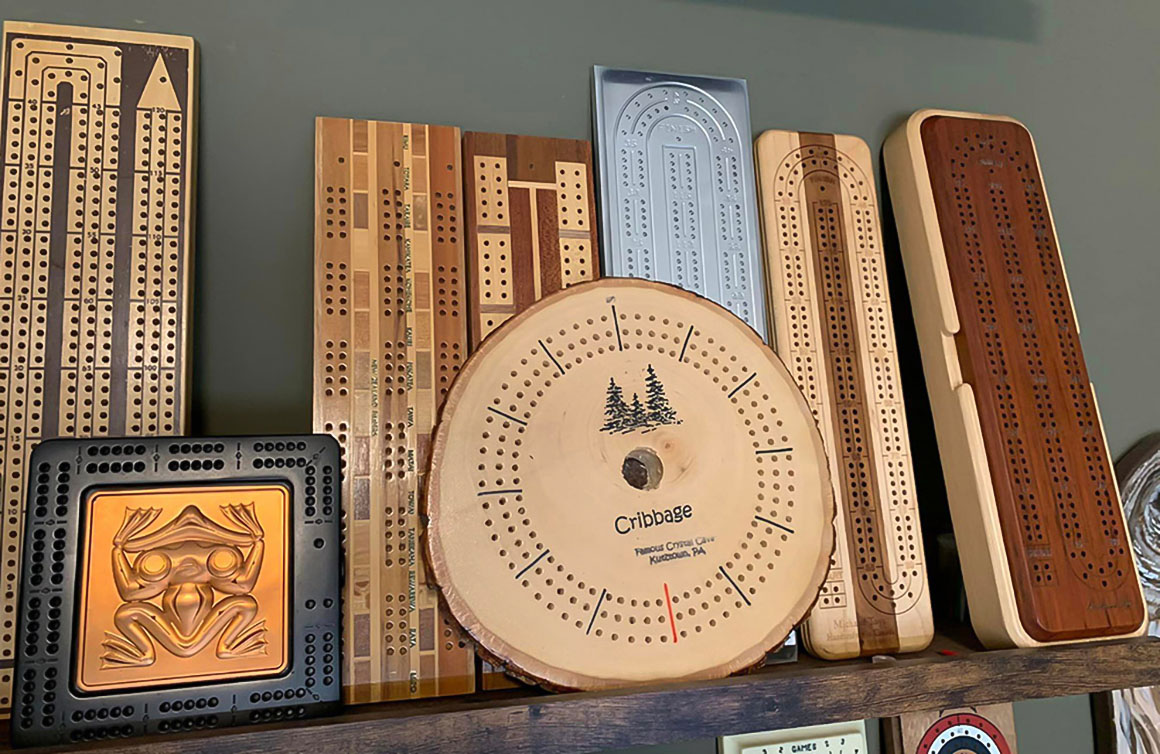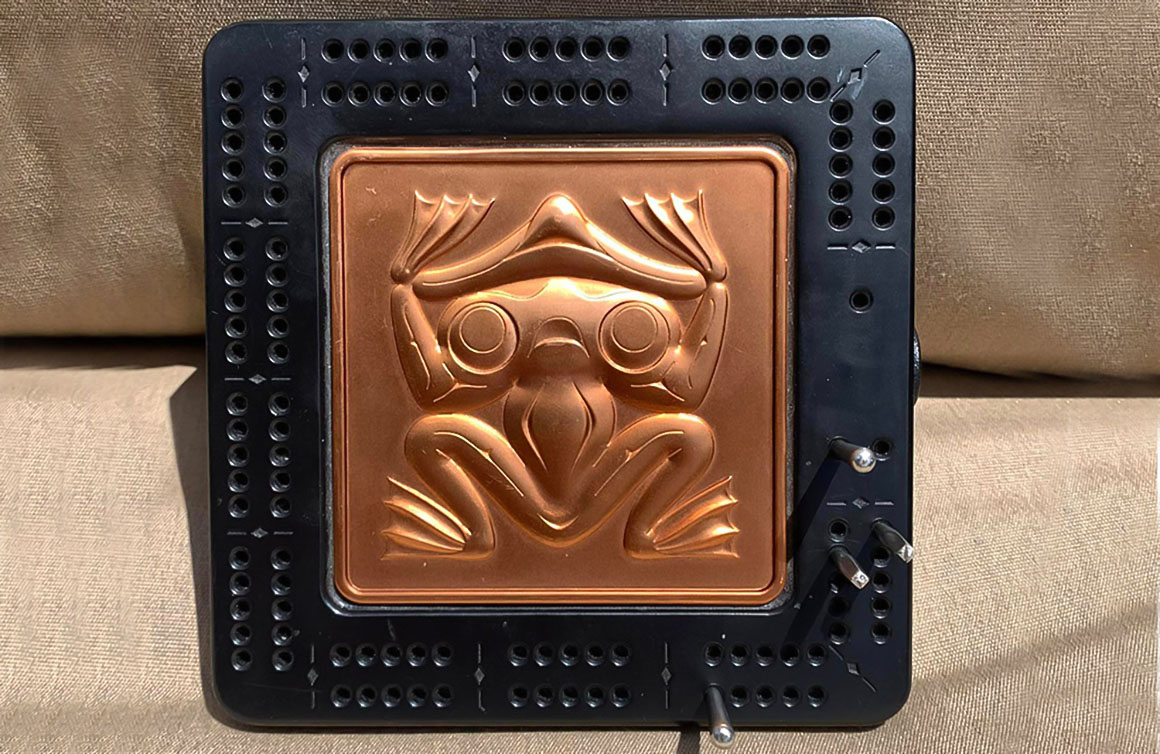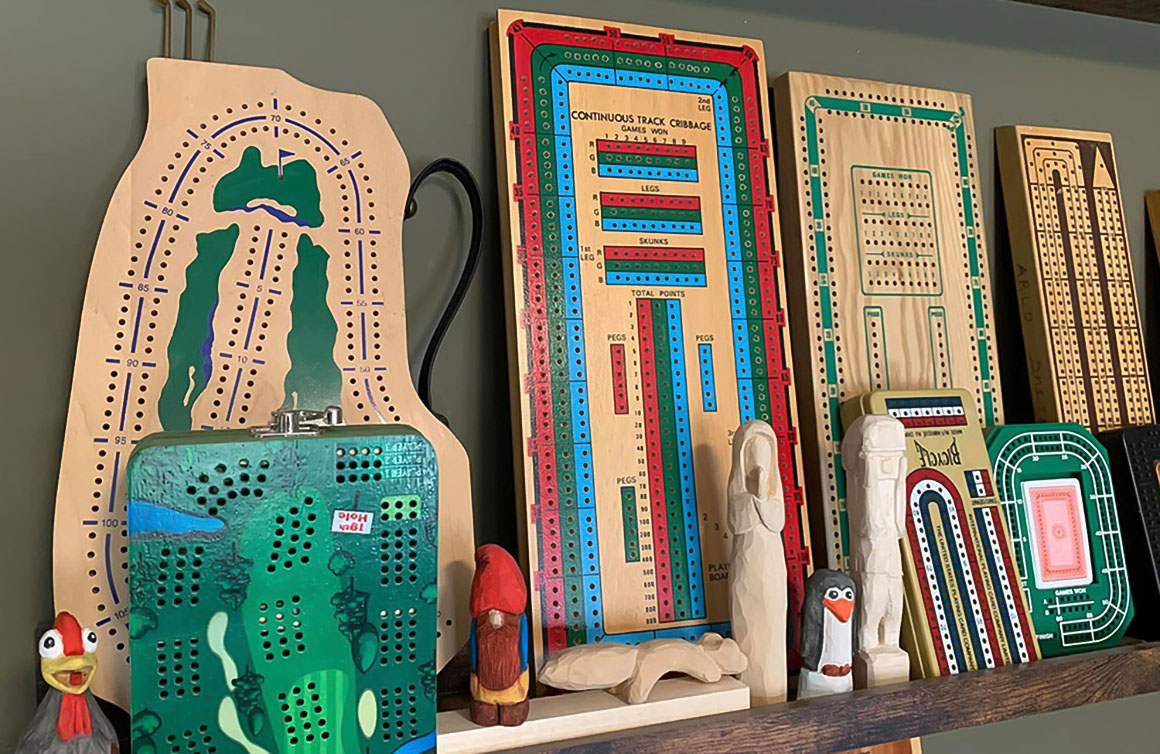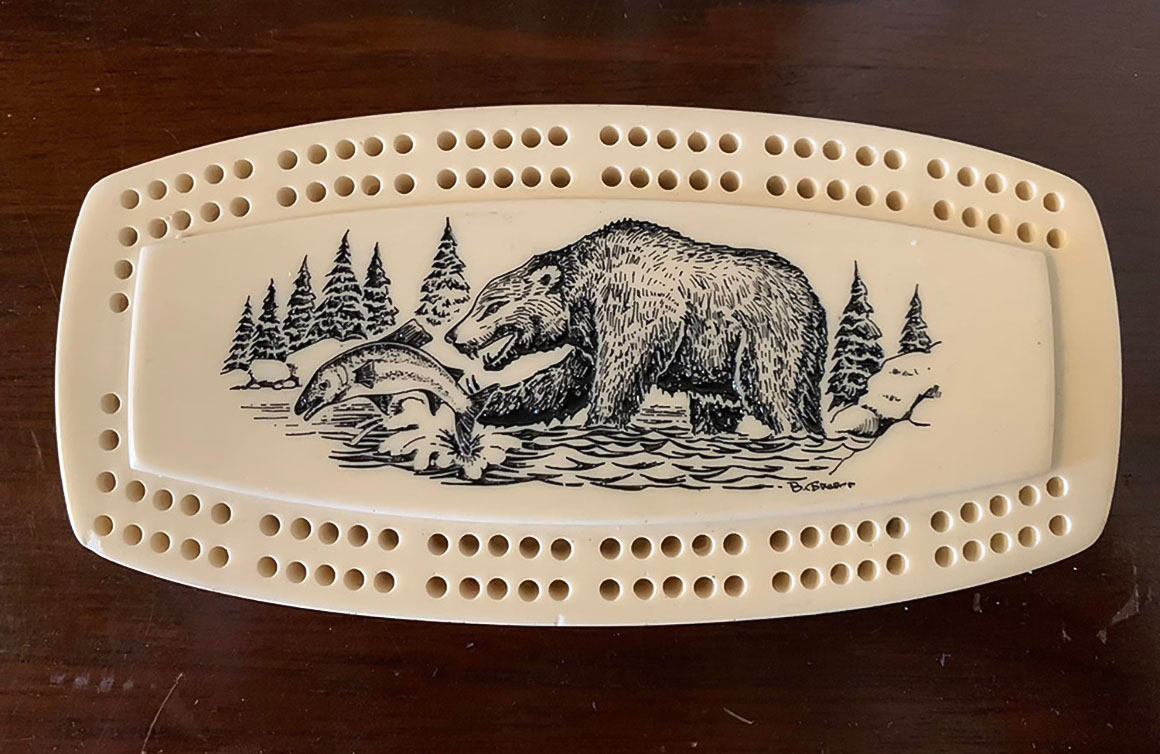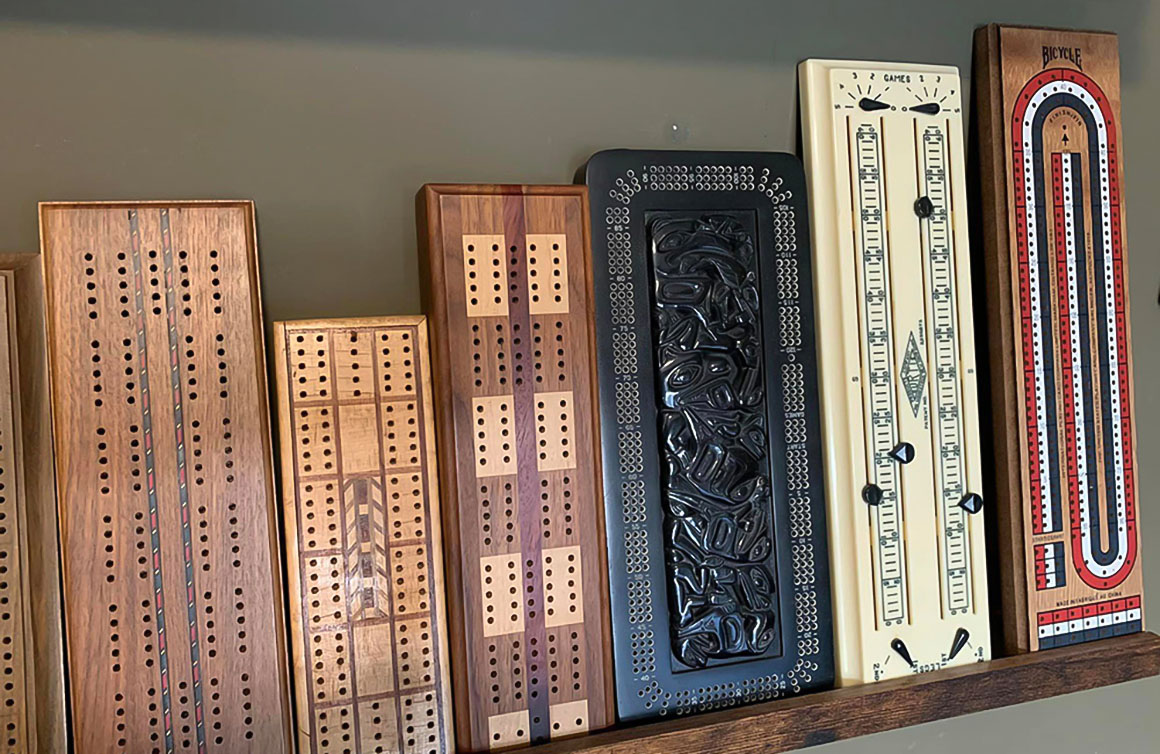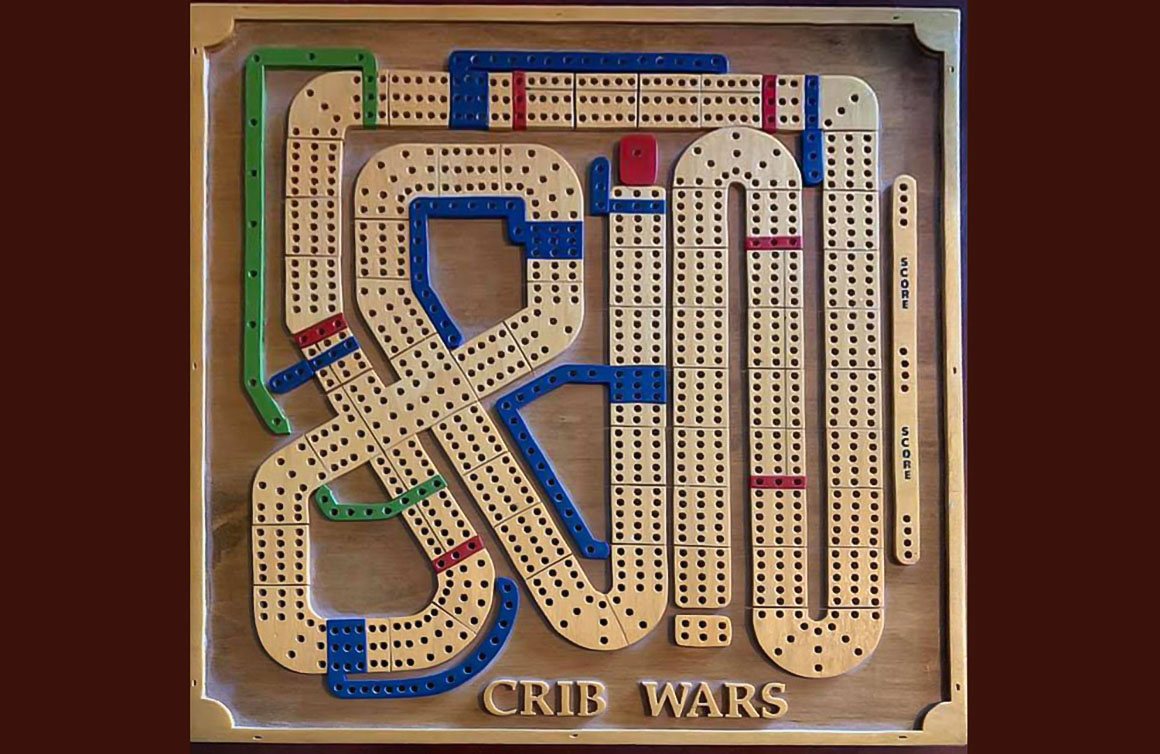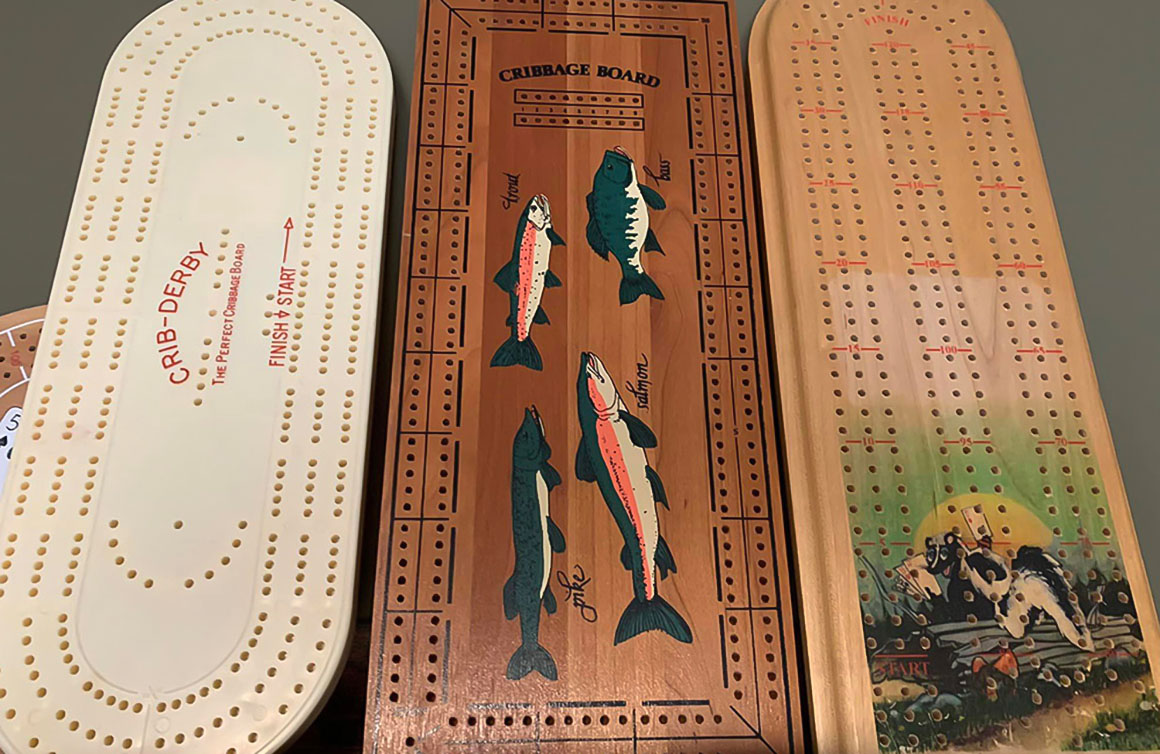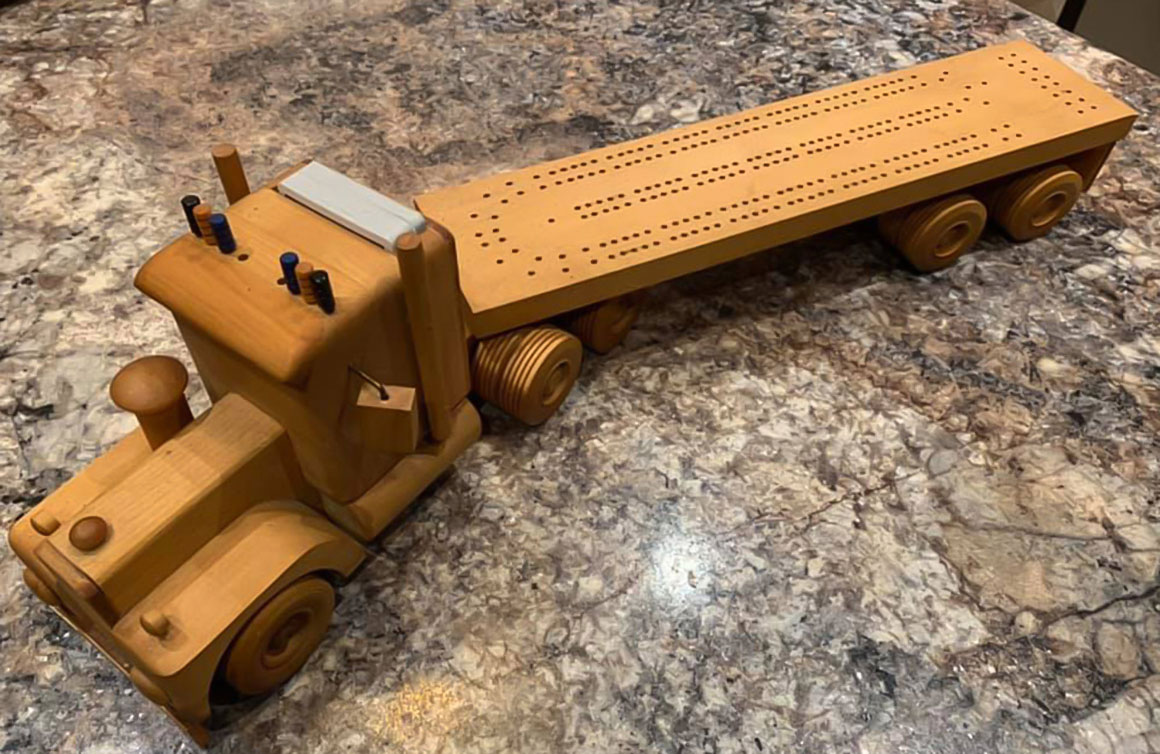How do you describe your collection?
I have a collection of cribbage boards that have a special interest to me. Currently, it’s between 75 and 80 boards.
There are a million boards out there. Many of them are common — the ones you might find at places like Walmart or Chapters. I’m always on the lookout for not necessarily the antiques or the most valuable, but the boards that are a little different and not mass-produced. Some collectors go after the boards that are one-of-a-kind made by craftsmen. I do have a couple of those, but most of my boards are made by small companies or were limited productions.
When and why did you start your collection?
The collection isn’t too old, just about five years or something like that.
I’ve always loved cribbage and have had boards around me. In our house, as soon as you could count, you played cribbage. My dad is from the Maritimes, and my mom is from the Ottawa Valley. Both those regions are big for cribbage. Everywhere I went, there was a cribbage board.
My own kid started learning as soon as he knew his numbers. I would ask him which cards to pick as he sat beside me. He didn’t have an in-depth understanding of the game, but it was the concept of looking for pairs and cards that added up to 15. Over the years, you start to develop the strategy side of the game.
My brother piqued my interest in collecting boards. He’s a big antiquer. I started going with him to a couple of antique malls and doing the rounds of the thrift stores and that kind of thing. I just happened to come across a couple of boards that I found interesting, and boards at thrift stores are pretty cheap.
How do you display and store your collection?
I thought they would be interesting to display. My original thought was to put them in shadowboxes. The boards are rectangular-shaped for the most part, and I wanted to make a collage out of them if I could find a neat way of puzzling them together into a three- or four-foot display. That was the original plan.
I quickly found that boards aren’t necessarily rectangular. And, some of the boards I was most interested in were not the rectangular ones, the common shapes, or shapes that would work in that layout. I ended up displaying them in my office on shelving I found on Amazon.
I’m at the point where the shelves are full. When I add another board, I get rid of one. When I buy a new board, it has to be better than the worst one in my collection. I wouldn’t say my wife and I are minimalistic in our house by any means, but I really want to keep the collection at a certain size. A board would have to be pretty special for me to add it to the collection.
What do you consider to be the Holy Grail of your collection?
My grandfather’s board. It’s a blue plexiglass board with a woman on the back. It’s my Holy Grail because I grew up with it — it’s the board I learned to play on.
I spent a lot of time at my grandparents’ house growing up. That board has always been around. My uncle had it since my grandfather died 20 years ago. Once I got into the collecting side of things, I mentioned that board to my mom, who contacted my uncle about it. Everyone has different ties to stuff. That particular thing didn’t have any sentimental value for my uncle so he passed it along to me. It certainly has a lot of sentimental value to me.
There is a board that I’m interested in — an electronic cribbage board that someone posted photos of on a Facebook group only a couple of weeks ago. It’s from Cogswell’s Computer Operated Gaming Systems. It reminds me of the handheld video games with LED screens from back in the day. It has little buttons, and the LEDs light up as players progress on the board. That’s the board that I currently think about.
I’m not interested in paying a lot of money for boards — that’s just not the kind of collection I’m interested in.
What advice would you give to someone interested in starting a cribbage board collection?
The thing I learned is, don’t just buy quantity. In the beginning, I went around to the thrift stores, and if I saw a board I didn’t have, I bought it. It’s $3 here and $5 there. It added up to a quantity that I didn’t want and boards that I didn’t really care about. They had no meaning to me.
I would suggest focusing on a specific style, shape, or material of board. Seek out the boards that appeal to you rather than looking for quantity. You can buy boards at any thrift shop but they may not be that special to you.
Find Cory — and a thriving community of cribbage enthusiasts — on the Cribbage Board Collectors Society and the American Cribbage Congress on Facebook.
Drop us a line to let us know about your collection of vintage toys and/or games. We just may feature your collection!

